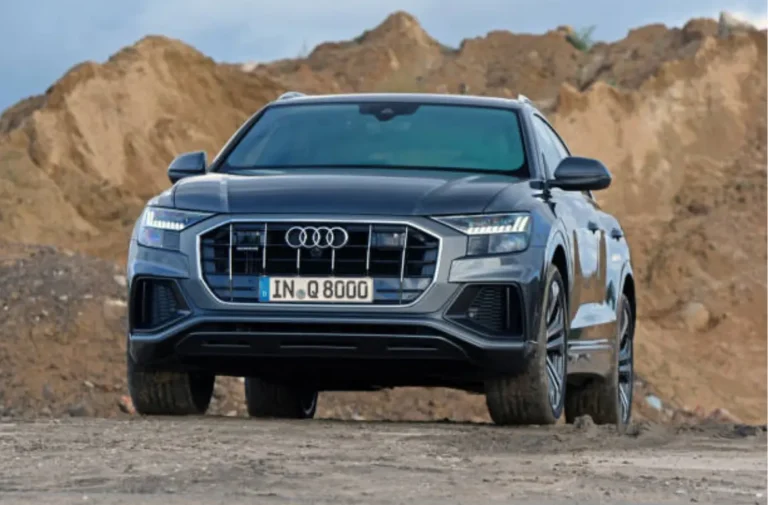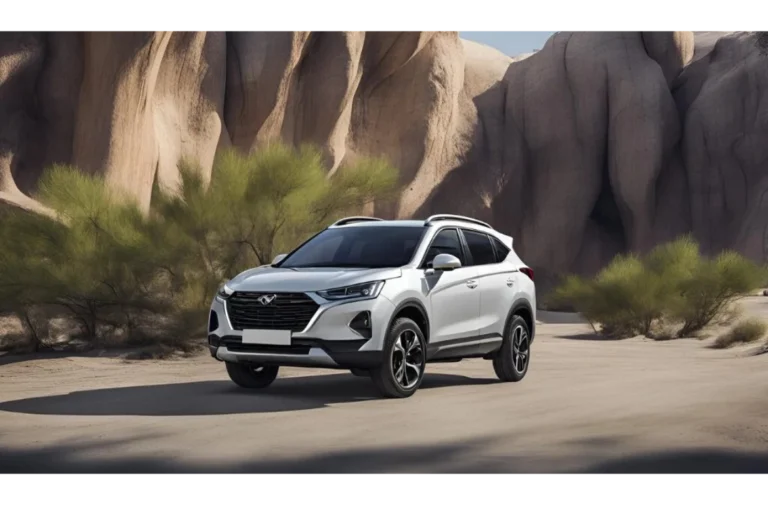Top 4×4 VS AWD Explained: Essential Guide for Off-Roading
Have you ever thought which drivetrain is best for off-road driving, is 4×4 VS AWD? These systems are built to improve traction and enhance stability under rough conditions, but one has to know how exactly they differ to be able to deal with rough terrains effectively. Choosing the right one can either make or break the deal when going off-roading.
Many people think that 4×4 systems are more effective in adverse conditions while many believe that AWD systems are more appropriate in versatile conditions. Each one has something that makes it suitable for a specific off-roading scenario but each one has limited resources as well. Understanding how these systems operate can help you in effective navigation during your next adventure.

In this post, we will clarify the misunderstandings in connection with the 4×4 and AWD systems. You’ll get to know how both works, what advantages do they have and what is the best opportunity to use each one of them. By the end you will have all necessary information to make an appropriate decision and take on the roughest trails with confidence.
What Factors Should Inform Your Decision to Buy an 4×4 VS AWD Vehicle?
- Know what you’re 4×4 VS AWD buying,” Dave Rees, an off-road enthusiast, advises. “Know what you are going to be doing and what the vehicle can do.”
- Rees states that an AWD system works fine on a day-to-day basis, and that an AWD Subaru performs well on loose surfaces like gravel.
- However, if one wants to go further than loose gravel, it is recommended to go for a 4×4.Something like the new Lexus GX comes close – it is an AWD, but has a locking center differential and acts like a 4×4.
- Both systems win respect from logic in such a manner that there is a minimum amount of clearance and traction as a requirement for moving over an obstacle,” these are the words of Rob Shydo.
- one of the off-road experts associated with Exploring NH.
- Bridging such clearance, Shydo goes on to state, may be mainly variable in an AWD and 4WD car, despite the two having the same or somewhat similar clearance.
For example, 4×4 VS AWD, most would nitpick any of the AWD car-like vehicles such as the Outback or Crosstrek, yet these have a new ride height rivaling other new SUVs or trucks, including the new Lexus GX and the sequel to this Lexus in the tier, the upcoming 250 Series Land Cruiser.
A model of the Subaru Crosstrek, which has been specially developed for trials above the line of dirt, features a somewhat 9.3 inches ground clearance. The new GX and Land Cruiser only allow you 8.9 inches and 8.7 inches, respectively.
Once the ground clearance is exceeded, or ‘talent’ as he considers it, a 4WD vehicle such as a 4Runner is likely to outperform an AWD such as a Subaru, further down the road. In the case of the 4runner, the least probable area to bang into an obstacle is a part of the rear axle, so ‘if you out-image what’s do able, a pretty robust element of metal is going towards the obstacle’.
The Historical Context of 4×4 VS AWD
4×4 VS AWD:We might zoom back in history for a moment. 4×4 systems have existed since the early twentieth century. They were initially intended for military trucks and tough working vehicles. Eventually, they infiltrated civilian life, turning out to be the best option for off-road vehicles, particularly those in need of adventures.
Actually, adaptive AWD is a newer concept of innovation. It became popular in the 1980s and 90s with rally cars and luxury sedans. Nowadays, 4WD systems have been enhanced with modern technology to assist in the handling and safety of the vehicles.
Best Vehicles 4×4 VS AWD
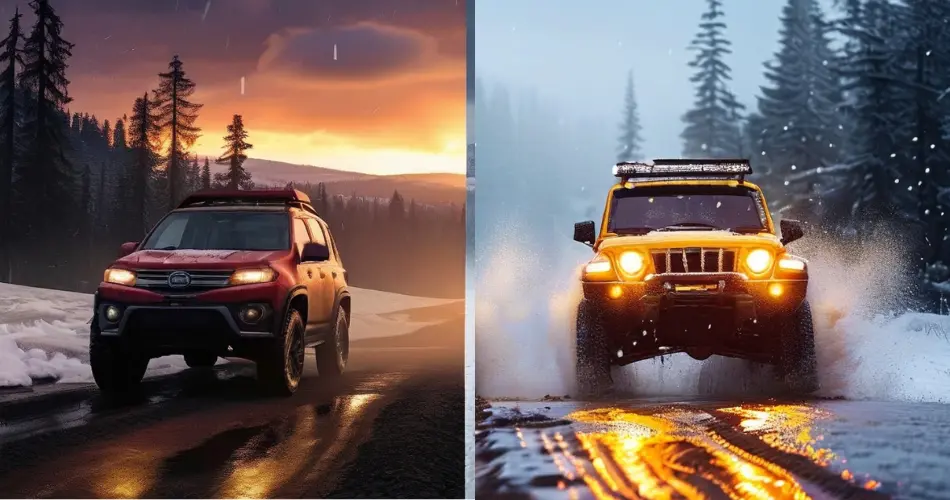
Now we’ve gotten through the ground rules, and let us head straight into some of the best vehicles when it comes to 4×4 VS AWD among the many out there.
Best 4×4 Vehicles
- Jeep Wrangler
- Toyota Land Cruiser
- Ford Bronco
Best AWD Vehicles:
- Subaru Outback
- Audi A7 Quattro
- Audi A5 Quattro
- Volvo XC90
What Is a 4×4?
Toyota 4Runner is an old friend. It is equipped with 4×4 to drive it through rough-torn paths and snow-covered roads.

4×4, popularly known as part time four wheel drive or 4WD, is a system which can be configured to apply power to either two or four wheels. This is normally done with the help of a transfer case which can be engaged or disengaged by the driver using a lever, knob, or button located within the vehicle.
Most 4×4 cars have a two wheel drive mode for normal driving and have two more drives which are the high range known as 4-hi and low range known as 4-lo.
These options make sense as they provide the driver with greater power and control when driving greatly below the limit. For example, if one was to choose 4-lo, the vehicle would be able to climb a hill that is muddy at the rate of 5 mph. Cars with the real 4×4 systems are best during heavy off-road use, for example fighting steep hills, climbing boulders and rough muddy trails.
Characteristic of 4×4 off-road Vehicle
The following is now visible in the Table below:
| Purpose | Perfect for extreme off-road applications such as mud, rocks, and harsh gradients. |
| System Operation | Usually, it is operated by a driver, who is capable of manually switching on four wheel drive system |
| Traction | An advantage in environments which have low traction because of the manual locking features. |
| Complexity | Less complicated in structure, generally equipped with a transfer case and locking differentials. |
| Terrain Capability | Effortlessly copes with tough terrains, inclines and ditches. |
Fuel Efficiency | Less efficient due to increased weight and power demands when engaged |
| Driver Control | Requires manual engagement for 4WD and specific adjustments for different terrains |
| Cost | Generally less expensive to purchase and repair |
| Maintenance | Easier to maintain but can be costly |
| Best Use Case | Dedicated off-road vehicles like trucks |
Pros and Cons of 4×4 off-road Vehicle
| Pros | Cons |
| Most 4x4s have more ground clearance than AWDs. | Heftier versions than AWD |
| They offer reading that is more precise for a particular off-road scenario. | Greater driver interaction demanded |
| Their good for individuals that consistently leave the asphalt road and gravel roads | More fuel unfriendly than AWD systems |
| Can be towed flat on the back with the ign. on and transmission in the neutral position. | Involves higher maintenance, increasing the ownership investment |
What Is AWD?
AWD, or all-wheel drive system, is often called full-time 4WD; it often drives all four wheels simultaneously. Most modern AWD vehicles are equipped with anti-slip mechanisms that transmit power from the wheels in the front to the rear wheels or from one side of the rear wheels to the other side, depending on the demand for power.
Therefore when a wheel is spinning and not gaining traction, a mechanism helps to transfer power to the remaining three wheels to keep the vehicle in motion. A two-wheel drive mode or a single high or low gear transfer case is not usually available.
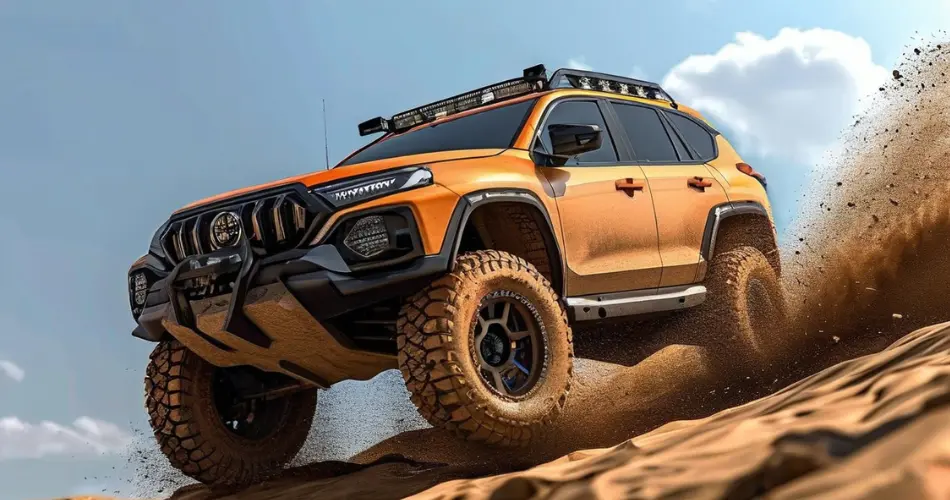
AWD is highly effective on surfaces such as gravel, sand, or snow, which makes it useful in off-road rally vehicles. Still, at low speeds, when the vehicle is required to crawl over boulders and rocks, it is not effective.
Characteristic of AWD
The following is now visible in the Table below:
| Purpose | Suited for light off-roading and all-weather traction on varied surfaces. |
| System Operation | A fully automated system that distributes power to all wheels as needed. |
| Traction | Constant traction optimization for changing conditions. |
| Complexity | More complex system with advanced sensors and torque vectoring. |
| Terrain Capability | Excels on wet, icy, or uneven roads but limited in extreme off-road environments. |
Fuel Efficiency | More fuel-efficient as it operates primarily in two-wheel drive during normal conditions. |
| Driver Control | Fully automatic, requiring no driver intervention. |
| Cost | Typically more expensive due to advanced technology and components. |
Maintenance | More complex to maintain and repair due to intricate systems. |
| Best Use Case | Everyday vehicles needing enhanced traction for varied road conditions. |
Do I really need a 4WD Car?
When choosing between a 4×4 and an AWD vehicle, one must realize that AWD can cope with what the average person expects it to do off-road.
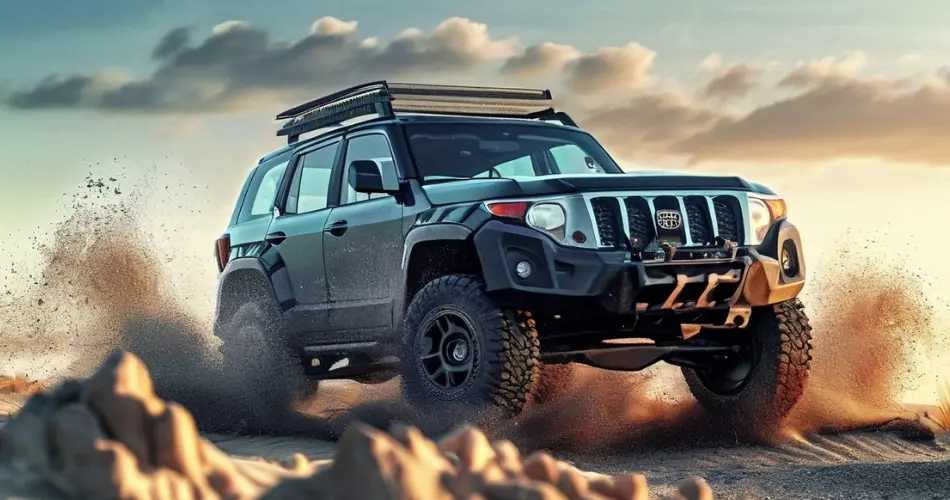
- Most people want a Ford Bronco with 50 grand worth of mods,” but no, you can do just fine without that,” for says Randy Nonnenberg, the founder of the auction site concerning used vehicles – Bring a Trailer.
- Off-roading is no longer a challenging sport, argues Nonnenburg., as he knows how to indulge in it properly. “Things that I found very elite off-roaders when I was younger, such as a Jeep CJ-7, Land Cruiser, and early Bronco, you can actually do shockingly better off-roading in a Subaru Outback. It’s insane how reliably vehicles are nowadays.
Pros and Cons of AWD
| Pros | Cons |
| Requires equally less driver input | Usually installed on crossovers or vehicles with lower ride height although some form of skid plates are necessary for off-roading purposes |
| Realistic for the majority of people and driving scenarios | No direct throttle input |
| Has more fuel economy compared to 4×4 | No locking: electronic differentials available but not locking |
FAQs of 4×4 VS AWD
In The End
It is necessary to choose between a 4×4 VS AWD depending on your vehicle’s otherwise partly intended use. A 4×4 best suits those who wish to go off with their wanderlust – surfing through unchartered terrains, climbing over rugged hills, dashing through swaths of mud, and so on. If that is not your line of fun or you are the type of person who goes almost everywhere driving on snow or slippery roads and wishes to make things easier for yourself – then AWD sounds suitable for you.
Other factors worth mentioning are the purpose of use in which case they for both systems are safety and enjoyment of the trip. However, understanding the working principles and knowing when and how to use them is also important and such knowledge does make a difference as well. With proper selection, rough mountain trails or a city street after a heavy snow storm can be easily mastered without fear and hesitation.




